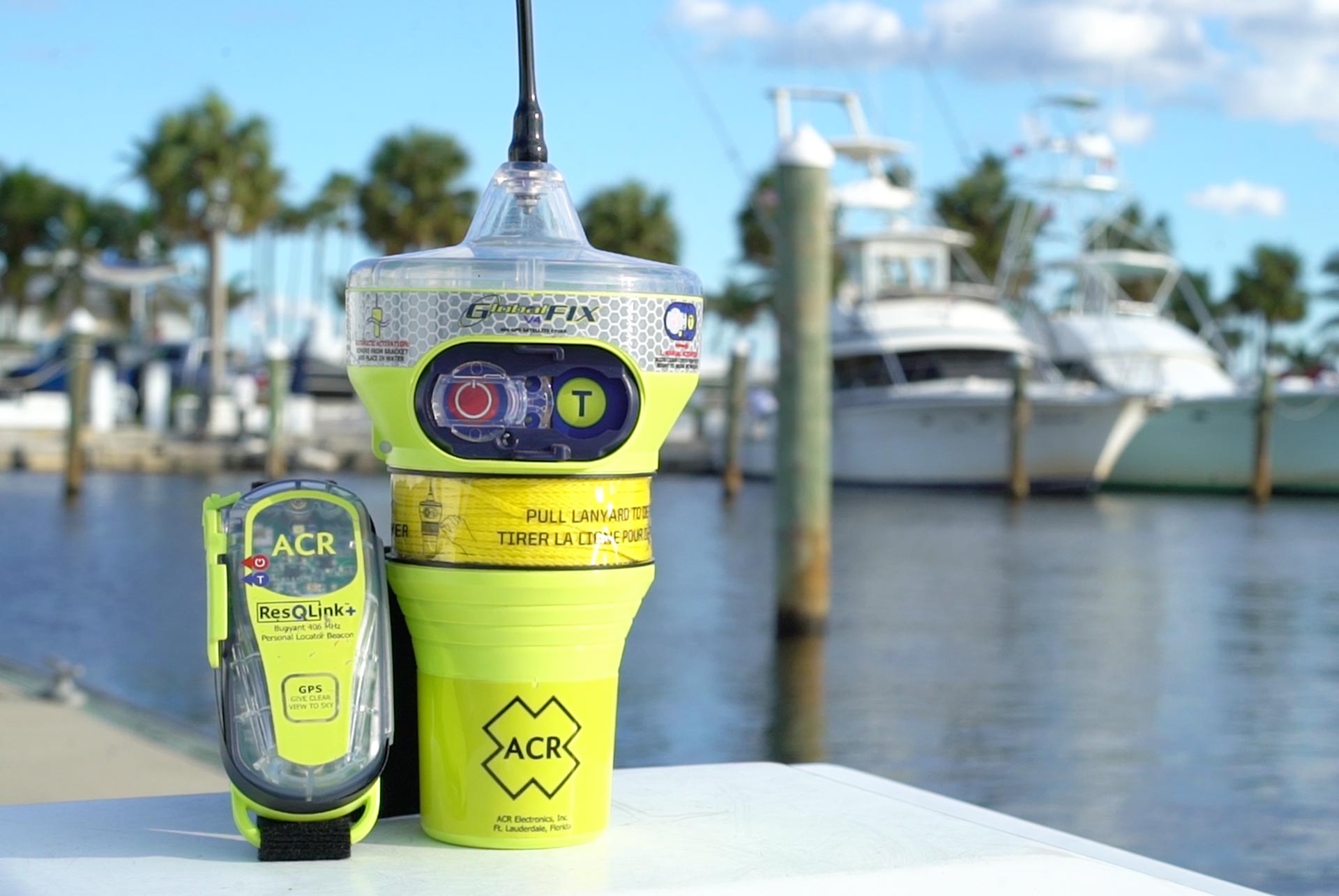Introducing the most technologically advanced beacon in the world.
![]() Containing both satellite and local signals; with automatic identification
system
(ais), return link service (rls), and near field communication (nfc) in a single 406 mhz beacon, the resqlink ais represents a critical advancement in the evolution of plb technology.
Containing both satellite and local signals; with automatic identification
system
(ais), return link service (rls), and near field communication (nfc) in a single 406 mhz beacon, the resqlink ais represents a critical advancement in the evolution of plb technology.
An rls-enabled beacon is a beacon that has the return link service feature. The return link service feature is an indication (e. G. , a light or text display) on the beacon that confirms to the user that the distress signal from the beacon has been received and localized by the cospas-sarsat system and forwarded to government authorities for action. It does not mean that a rescue has yet been organized/launched, only that the distress alert has been received and routed to the appropriate government agencies. For further information about how the return link service feature works, and performance expectations, you should watch the cospas-sarsat video on rls and read the related sections of the sar/galileo service definition document.
This expensive equipment is sent out to customers in good-faith that it will be returned. As such, we require a contract to be signed and credit to be charged before the equipment is shipped. When you place your order you will be sent an contract and are required to sign and return this paper contract before you are charged or your equipment is shipped.
Acr’s 2852 is a category ii manual release emergency position indicating radio beacon (epirb) that alerts search and rescue of your exact location with ais and return link services (rls) providing direct to beacon confirmation that a distress signal has been sent. Ais functions not only alerts search and rescue but also broadcasts an ais safety message on vhf frequencies that can be seen immediately by any ais equipped vessel nearby. Ac2852.
Search-and-rescue response [ edit ]
Orbiting high overhead every minute of the day is a worldwide network of polar-orbiting and geostationary satellites. Together with russia’s cospas spacecraft, they make up the high-tech international search and rescue satellite-aided tracking system known as cospas-sarsat. Cospas-sarsat has been credited with nearly 30,000 rescues worldwide. The system relies on signals received on the 406 mhz frequency to pinpoint position and speed rescuers to the scene of an emergency on land or at sea.
 In fact, the more reliable, digital 406 mhz frequency has become the de facto internationally recognized distress frequency. Using the 406 mhz frequency, modern signaling devices can quickly beam gps lat/lon coordinates to orbiting satellites.
In fact, the more reliable, digital 406 mhz frequency has become the de facto internationally recognized distress frequency. Using the 406 mhz frequency, modern signaling devices can quickly beam gps lat/lon coordinates to orbiting satellites.
Emergency Position-Indicating Radio Beacon [ edit ]
This standard specifies the minimum performance requirements, technical characteristics and type-testing requirements of 406 mhz emergency position indicating radio beacons (epirbs) used in the cospas-sarsat satellite system, it is based upon iec 61097-2, edition 3. 0 and details only additions, exceptions and changes to that standard.
Personal Locator Beacon [ edit ]
The mcmurdo smartfind epirb is the only epirb that can send all three signals- a 406 mhz gps signal, 121. 5 mhz homing signal, and ais signal over vhf radio frequencies. It weighs 2. 68 pounds and requires six lithium-ion batteries. The ais signal sends alerts to commercial ships equipped with ais technology. Ais distress is integrated with most marine radios and also personal locator beacons. It also alerts local vessels that could come to the rescue. This epirb meets all us and international standards. It has a 48-hour fully operational battery with a 10-year storage life span. It also offers protection against accidental activation.
As the name suggests, a personal locator beacon is designed for use by a person - whereas an epirb is assigned to a vessel. Typically, a plb is attached to a safety device such as a life jacket - or carried in a pocket. Manually activated, the personal locator beacon sends the same signal to the same destination, using the same route, as an epirb. Because plbs can be carried by an individual rather than a vessel, they can be used anywhere in the world - whether on land or at sea. It's a mandatory requirement for all commercial vessels to have an epirb registered onboard, and they should be mounted where they can be quickly grabbed.
See also [ edit ]
This site and its contents are copyright © 2023 sail-world sail-world australia and/or the original author, photographer etc. All rights reserved. Photographs are copyright by law. If you wish to use or buy a photograph contact the photographer directly. If you have any questions about advertising or editorial then please contact our team. If you encounter any technical issues then please email techsupport@sail-world. Com.
No comments:
Post a Comment